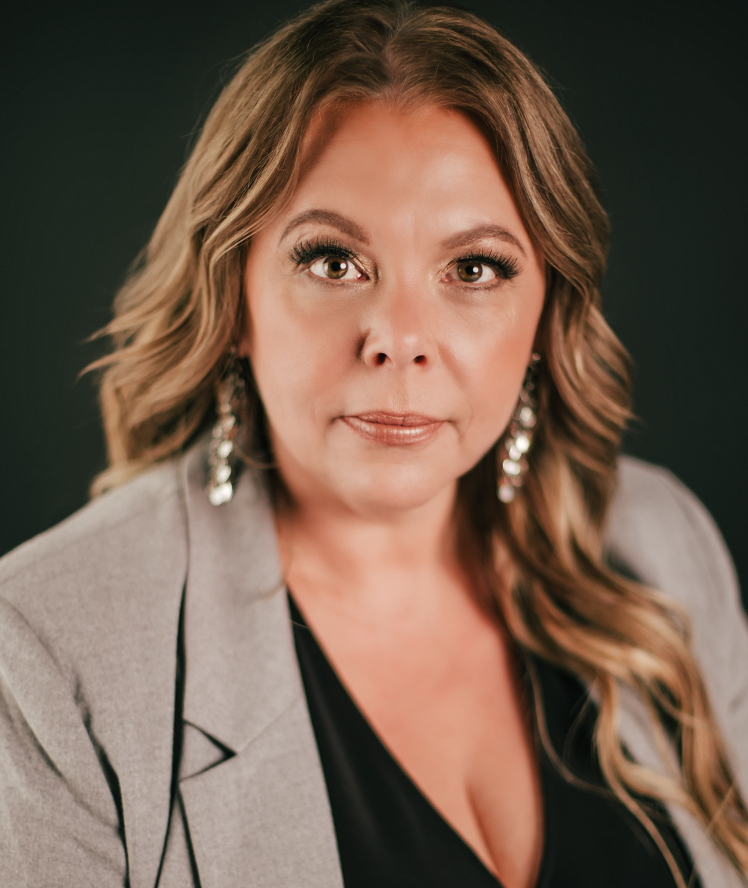Call center agents played a vital role during the pandemic, when many customers were otherwise cut off from outside services. This included bank accounts, utility subscriptions, and other transactions made outside the home, where call centers provided a primary point of contact. Today, little has changed—whether it’s a matter of a double-charged online grocery purchase or a delayed bank payroll transfer, a friendly customer call center is there to help. The spotlight has now turned to call center metrics, with the objective of enhancing the customer experience and maximizing business profitability.
Call Center Metrics Show Agents’ Effectiveness ... or Not
How do you go about measuring the performance of call centers to make sure they’re meeting customers’ needs? This is a crucial question for companies involved in selecting the perfect call center partner. Moreover, how do businesses evaluate the effectiveness of one call center over another? After all, performance remains the top indicator of a call service agency’s success.
An overview of a call center’s performance against a given set of metrics helps separate the winners from the also-rans. Here, Key Performance Indicators (KPIs) offer a useful insight into how these providers fare against one another. In addition, using KPIs makes it easier to see how each call center delivers on its promised service. When selecting a call center partner, it pays to check out their call center metrics first.
Seven Call Center Metrics That Measure Performance

To measure a call center’s performance, you need to know more about the various KPIs. These are benchmarks that monitor and assess how agents, shifts, and teams perform their tasks.
In this article, we’ve chosen seven of the most common call center metrics used to gauge performance. Call centers that score high on some or all of these metrics deserve a closer look—and an opportunity to place a bid once you start soliciting proposals.
1. First Response Time (FRT)
First response time (FRT) is undoubtedly one of the most critical call center metrics. It measures the total time taken for an agent to respond to a specific customer inquiry or support ticket. Further, FRT often determines the direction of the client’s overall customer experience. And if the wait’s too long, chances are the frustrated customer may decide to look elsewhere.
So, how do you determine which contact centers have a great FRT rate? Most call center metrics target an average response time of 20 seconds or less. A successful FRT rate happens when a shift reports an 80% FRT accomplishment rate. This means that 80% of calls made during a shift hit the target FRT response time of 20 seconds.
2. First Call Resolution (FCR)
A fast response time is great, but what about actually resolving customer calls during that initial contact? First Call Resolution (FCR) measures the time needed to provide a first-time caller with a satisfactory response to their concern. An agent who’s able to swiftly attend to a caller’s queries and supply a resolution will help bump up call center metrics on customer satisfaction. After all, callers who’ve already waited too long for an agent to pick up the call won’t be in the mood to waste any more time. Ideally, they’d like a quick resolution—and the faster the better. Scoring high on FCR means that agents are effective at addressing issues, fast.
Why is FCR important? Most customers expect a speedy resolution to their problems when calling customer service hotlines. Meanwhile, agents have a similar motivation to resolve caller issues as soon as possible. That’s because prolonged or repeated calls can lower the total call resolution rates. Both parties agree that achieving a satisfactory conclusion via a single call is ideal.
3. Abandonment Rate
This call center metric focuses on the rate at which callers hang up the phone before speaking with an agent—and sometimes before even while talking with one. Understandably, some clients have to hang up to deal with an urgent matter. In most instances, however, it’s because they got tired of waiting.
When a call center has a high abandonment rate can mean two things. One, there are not enough agents on hand to attend to calls. Or two, agents are spending a lot of time on each call. Either way, a high abandonment rate can spell danger to any prospective client company.
Computing for abandonment rate usually takes the following formula: (inbound calls - abandoned calls - successful calls)/(inbound calls - abandoned calls) x 100. For example, if a shift handled 100 calls consisting of 20 abandoned, 75 successful, and 5 unresolved, the abandonment rate becomes (100-20-75)/(100-20) x 100 = (5/80) x 100, or 6.25%. On average, call centers report a 5.81% abandonment rate, so companies with higher rates might need to review their agents’ performance.
4. Average Speed to Answer (ASA)
Further call center metrics measure a company’s ability to respond in a timely manner— such as the Average Speed to Answer—or ASA. This metric usually calculates the time elapsed between the caller entering the queue and a customer service agent acknowledging the call. A quick ASA can lead to grateful customers who’ve been spared the agony of a long wait time.
At the same time, having to wait too long will annoy a caller. In many cases, they’ll hang up the phone even before somebody manages to answer. Standard telephone etiquette reports that most callers hang up the phone after five or six rings. As such, a lot of call centers need to up their game!
The difference between ASA and the earlier FRT is that ASA accounts for the time waiting for a call center agent to answer the phone. Meanwhile, FRT measures the time for an agent to respond to the caller’s inquiry. A bad ASA is already a frustrating experience for customers, but having an equally bad FRT during the same call will ruin the overall customer experience. As any customer service expert will tell you—anything less than “satisfactory” can lead to a customer moving their business elsewhere. In fact, a 2020 Forbes report confirmed that a whopping 96% of customers abandon a company after a negative experience.
5. Average Handle Time (AHT)
Average Handle Time (AHT) records the total time it took an agent to handle a customer call. This lasts from the moment the agent answered the call until that caller hangs up. AHT is a good way to measure the agents’ call-handling efficiency. For instance, a high AHT means agents might be spending too much time on their calls. The result is fewer calls serviced, which translates to higher costs per call as well as lower efficiency.
A high AHT isn’t any better for customers. Your average caller would like their inquiries resolved as quickly as possible, so a long back-and-forth without achieving closure can be extremely off-putting and erode loyalty in your business.
According to Call Centre Magazine, the industry-standard AHT is 6 minutes and 10 seconds. Companies reporting an AHT that’s well in excess of this benchmark might need to pay closer attention to their operations. That said, many experts caution against using AHT alone when evaluating agents, as it doesn’t show the big picture.
6. Average After-Call Work (ACW) Time
Average After-Call Work Time—or ACW—is a call center metric that evaluates how much time an agent spends completing tasks immediately after a customer call. This might include updating the Customer Relationship Management (CRM) database, filing or updating reports, and adding calendar and to-do activities. It’s important to close out a call by completing the necessary documentation before proceeding to he next call.
Although these post-call tasks are necessary, agents who spend too much time on them end up with less time for calls. Additionally, longer ACW times can lead to longer wait times for subsequent customers. With a high ACW, the agent is also performing less efficiently, which ultimately affects the entire team’s performance. Fewer customers serviced in a given shift means higher costs and lower efficiencies per call.
Per International Finance Corporation standards, an agent is expected to complete after-call activities within six minutes. Reducing the time needed for the various tasks can increase an agent’s efficiency scores substantially.
7. Customer Satisfaction Score
The Customer Satisfaction Score is by far one of the most significant call center metrics. That’s because it takes the customer’s opinion into consideration. After every call, the agent asks the customer to fill out a short survey regarding the services provided.
The overall aim of customer service is to make customers happy. If they receive a satisfactory response to their queries or are generally pleased with the quality of service, they’re more likely to respond positively and complete the survey.
However, not all customers are willing or ready to take the survey immediately after a call. This can seriously affect the overall results of an agent’s customer satisfaction score. In addition, some respondents can inadvertently distort the results by becoming too subjective in their evaluation. For example, detractors of the brand or product may, by association, trash customer service, even though their issues rest elsewhere. Meanwhile, loyal followers will likely click on the most positive ratings without even reading the questions properly.
Boost Your Call Center KPIs With The Right Partner
These seven call center metrics are just some of indicators companies can employ when checking their customer service agents’ performance. Other KPIs, such as adherence to schedules, forecast accuracy, and occupancy rates are also essential. In addition, benchmarks—such as hiring rate, turnover, and absenteeism—also affect how a call center meets its client’s needs.
Finally, the best call centers also follow strict quality assurance standards. This is to ensure that agents follow the set procedures outlined in the service guidelines. Each of these additional criteria can help businesses objectively evaluate call center agencies in handling their call center requirements.
A thorough understanding of call center metrics can help your company determine its priorities, including what they most need from call support agencies. Once you’ve reviewed each agency’s metrics, agree on a set of benchmarks to guide their performance going forward. These usually include KPIs for raising productivity, improving efficiency, reducing costs, and enhancing customer satisfaction.
Helpware Connects Customers
Need help improving your KPIs and providing the ultimate digital experience? Helpware is your trusted call center partner, connecting customers with business process outsourcing services designed to enhance the customer experience—no matter where they are.
Helpware draws on a diverse and highly-skilled talent pool that’s able to communicate with customers across various channels—effectively and efficiently. Further, Helpware’s inbound and outbound call center teams feature technology-enabled, empowered, and engaged individuals who are ready to take on the challenge of delivering superior customer service—at all times.
Let Helpware bring you into the 21st century, with unprecedented levels of customer support and success. Drop by our site and tell us more about your company’s specific requirements. We’ll present a highly customized solution that fits well with your specifications. Book now and start scaling up for optimal results.

 Table of Contents
Table of Contents





